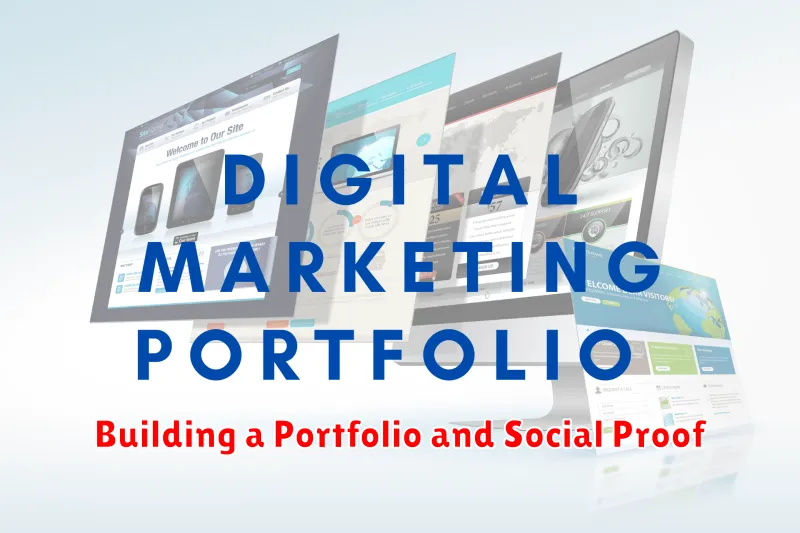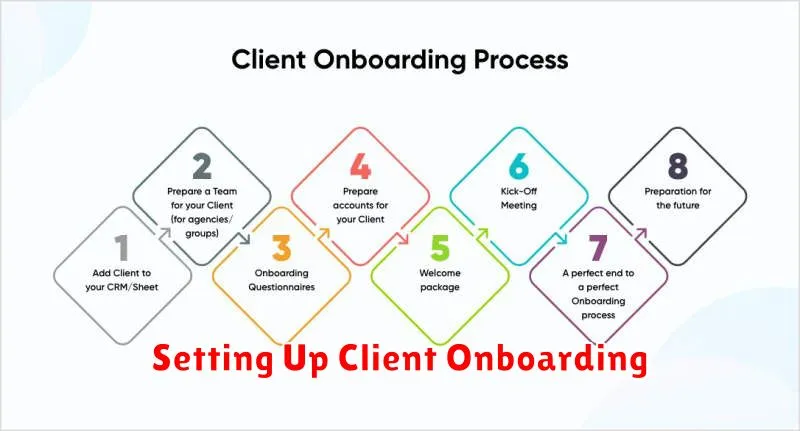Starting a digital marketing agency from scratch can seem daunting, but with the right approach and a clear understanding of the necessary steps, it’s an achievable goal. This comprehensive guide will equip you with the essential knowledge and actionable strategies to build a successful digital marketing agency from the ground up. Whether you’re an experienced marketer looking to branch out on your own or a newcomer to the industry eager to establish a thriving business, this guide will provide the foundation you need to navigate the challenges and capitalize on the opportunities in the dynamic world of digital marketing.
From developing a robust business plan and acquiring essential skills to building a strong team and attracting clients, we’ll cover every crucial aspect of launching and growing a digital marketing agency. We’ll delve into the core services offered by digital marketing agencies, including SEO, social media marketing, PPC advertising, content marketing, and more, empowering you to craft a specialized niche or offer a comprehensive suite of services. This guide will also address critical aspects of running a successful agency, such as client management, financial planning, and scaling your operations. Embark on your entrepreneurial journey with confidence and transform your vision of a digital marketing agency into a thriving reality.
What It Takes to Start a Marketing Agency
Launching a marketing agency requires a blend of strategic planning and operational execution. First and foremost, you need a clearly defined niche. Understanding your target market and the specific services you’ll offer is crucial for attracting the right clients and establishing your expertise. Developing a strong business plan outlining your target audience, revenue projections, and marketing strategies is also essential. Additionally, securing adequate funding to cover initial startup costs and ongoing operational expenses is vital for long-term sustainability.
Building a capable team is another critical component. Recruiting individuals with diverse skill sets in areas such as content creation, SEO, social media management, paid advertising, and web development is key to providing comprehensive marketing solutions. Effective leadership is essential to guide and motivate your team, ensuring everyone is working towards common goals. Establishing clear communication channels and processes will streamline workflow and foster a collaborative environment.
Finally, a robust client acquisition strategy is paramount for driving growth. Networking, building an online presence, and showcasing successful case studies are effective ways to attract potential clients. Developing strong client relationships based on trust and transparency is crucial for client retention and securing repeat business. Continuously adapting to industry trends and evolving client needs will ensure the agency’s long-term success and competitive edge.
Identifying Your Niche and Services

Identifying your niche involves pinpointing a specific area of expertise or target market where you can excel and offer unique value. This requires careful consideration of your skills, interests, and market demand. A well-defined niche allows you to focus your marketing efforts, establish yourself as an expert, and attract clients seeking specialized services.
Once you’ve identified your niche, you can determine the specific services you’ll offer. These services should directly address the needs and challenges of your target audience within your chosen niche. Clearly define what you offer, highlighting the benefits clients will receive. This clarity ensures potential clients understand the value you provide and how your services can help them achieve their goals.
For example, if your niche is social media marketing for small businesses, your services might include content creation, social media advertising management, and analytics reporting. By focusing on this specific area, you can develop targeted expertise and attract clients seeking those precise services.
Structuring Your Agency for Growth
Structuring your agency for growth requires a scalable and adaptable framework. This begins with clearly defined roles and responsibilities. Establish distinct departments, such as client services, creative, and operations, each with specific objectives and key performance indicators (KPIs). This clarifies individual contributions and streamlines workflows, ensuring efficient resource allocation as the agency expands. Furthermore, a well-defined organizational structure facilitates communication and collaboration, essential elements for successful growth.
Beyond departmentalization, consider implementing agile methodologies. These iterative processes encourage flexibility and adaptability, allowing your agency to respond effectively to evolving client needs and market trends. Prioritizing open communication, continuous feedback, and cross-functional collaboration empowers teams to work efficiently and deliver high-quality results. This agile approach fosters a culture of innovation, which is crucial for attracting and retaining top talent and driving sustainable growth.
Finally, investing in technology and automation is critical for scalable growth. Implement tools and platforms that streamline project management, automate repetitive tasks, and provide valuable data insights. This not only increases efficiency but also frees up your team to focus on strategic initiatives and client relationships. By leveraging technology and embracing a data-driven approach, your agency can optimize performance, identify growth opportunities, and position itself for long-term success.
Finding Your First Clients
Securing your first clients is a crucial step in establishing any business. Networking is key. Attend industry events, join relevant online communities, and leverage your existing personal and professional contacts. Clearly communicate the value proposition of your product or service and how it addresses specific client needs. Don’t be afraid to ask for referrals, as word-of-mouth marketing can be incredibly effective, especially in the early stages of a business.
Another effective strategy is targeted outreach. Identify your ideal client profile and develop a tailored approach for reaching them. This could involve direct email campaigns, social media engagement, or even cold calling. Focus on building relationships and demonstrating your expertise. Offering a free consultation or a trial of your service can be a powerful incentive to attract potential clients and showcase your capabilities.
Finally, consider leveraging online platforms. Create a professional website and actively maintain a presence on relevant social media channels. Online marketplaces and freelance platforms can also provide access to a wider client base. Ensure your online profiles clearly highlight your skills and experience, and include testimonials or case studies whenever possible to build credibility and trust.
Building a Portfolio and Social Proof

A strong portfolio is crucial for showcasing your skills and experience to potential clients or employers. It provides tangible evidence of your capabilities and allows them to assess the quality of your work. For creative fields, this might include work samples, projects, or a website. For other professions, it could involve case studies, publications, or a carefully curated resume highlighting accomplishments. Tailor your portfolio to the specific audience and industry you are targeting to maximize its impact.
Social proof complements your portfolio by adding credibility and demonstrating your reputation. This includes testimonials, reviews, recommendations, and endorsements from clients, colleagues, or mentors. Active participation in relevant online communities, contributing to open-source projects, or speaking at industry events can also build social proof. Sharing positive feedback and achievements on professional networking platforms further enhances your online presence and builds trust.
Building both a portfolio and social proof requires consistent effort and a strategic approach. Start early, even with small projects or volunteer work. Document your accomplishments meticulously and actively seek feedback to improve. Focus on showcasing your strongest skills and highlight the value you bring. Over time, a well-developed portfolio and strong social proof will significantly strengthen your professional profile and open doors to new opportunities.
Hiring Freelancers vs In-House
Choosing between freelancers and in-house employees depends on your specific needs. Freelancers offer flexibility and cost-effectiveness, ideal for short-term projects or specialized skills. They often come with their own equipment and software, reducing overhead costs. However, managing multiple freelancers can be challenging and communication might require more effort. In-house employees provide more stability and control, fostering a stronger company culture and facilitating deeper project integration. They are typically a better fit for long-term projects and core business functions. However, hiring in-house often involves higher costs, including salaries, benefits, and office space.
Consider the project scope. For short-term, defined projects with clear deliverables, freelancers are often the more practical choice. Long-term projects or ongoing tasks that require deep company knowledge and integration are usually better suited for in-house employees. The complexity of the project also plays a role. Simple, straightforward tasks can be easily outsourced, while complex projects requiring close collaboration and consistent communication might benefit from an in-house team.
Finally, think about your budget and management resources. Freelancers offer a more variable cost structure, allowing you to scale your team up or down as needed. In-house employees represent a more fixed cost but offer greater control and predictability. Managing freelancers requires strong communication and project management skills. With in-house teams, management efforts often shift towards team building and professional development.
Setting Up Client Onboarding

Effective client onboarding is crucial for long-term success. A well-structured onboarding process ensures clients understand your services, their responsibilities, and what to expect. This sets the stage for a positive working relationship and minimizes potential misunderstandings down the line. Start by gathering essential information from the client, such as their goals, expectations, and preferred communication methods.
Next, clearly outline the onboarding steps and timeline. This might include welcome emails, introductory calls, training sessions, and access to relevant resources. Provide a dedicated point of contact to address any questions or concerns. Regular check-ins are essential to ensure the client is comfortable and on track. This proactive approach fosters trust and demonstrates your commitment to their success.
Finally, gather feedback throughout the onboarding process. This valuable information allows you to refine and improve your approach for future clients. Ask for specific feedback on the clarity of communication, the effectiveness of training materials, and overall satisfaction with the onboarding experience. Continuous improvement is key to delivering exceptional client onboarding.
Tools to Manage Projects and Campaigns
Managing projects and campaigns effectively requires the right tools. Project management software helps teams organize tasks, track progress, and collaborate efficiently. Popular options include Asana, Trello, and Monday.com, each offering various features like task assignment, deadline setting, and progress visualization. Communication tools are also crucial, ensuring seamless information flow and facilitating quick decision-making. Slack, Microsoft Teams, and Google Chat are widely used platforms for team communication.
For campaign-specific management, consider tools that offer features beyond basic project management. These might include marketing automation platforms like HubSpot or Marketo, which help streamline marketing efforts, or CRM (Customer Relationship Management) systems like Salesforce, which aid in managing customer interactions and data. Selecting the right tools depends heavily on the specific needs of the project or campaign, including its size, complexity, and budget.
Beyond specific software, utilizing shared document platforms like Google Workspace or Microsoft 365 enhances collaboration and version control. These tools allow teams to work on documents simultaneously, ensuring everyone has access to the latest information. Finally, remember that even the most sophisticated tools require strong processes and clear communication to be truly effective.
Pricing Models That Work
Choosing the right pricing model is crucial for business success. It directly impacts revenue, profitability, and customer perception. Value-based pricing focuses on the perceived value offered to the customer. Cost-plus pricing adds a markup to the cost of production. Competitive pricing considers the pricing strategies of competitors. Selecting the optimal model requires careful analysis of your target market, cost structure, and competitive landscape.
Several other pricing strategies can be effective depending on the specific product or service. Premium pricing sets a high price to convey exclusivity and high quality. Penetration pricing uses a low price to gain market share quickly. Freemium pricing offers a basic service for free and charges for premium features. Subscription pricing provides ongoing access to a product or service for a recurring fee. Consider these options when developing your pricing strategy.
Effective pricing involves continuous monitoring and adjustment. Regularly assess your pricing model’s performance against key metrics such as sales volume, revenue, and customer feedback. Be prepared to adapt your pricing strategy to changing market conditions and customer preferences. Flexibility is key to maintaining a competitive edge and maximizing profitability.
Scaling Systems and Automation
Scaling systems effectively requires careful planning and execution. Scalability refers to a system’s ability to handle increasing workloads or demands without impacting performance. There are two primary approaches to scaling: vertical scaling (increasing resources on a single machine) and horizontal scaling (adding more machines to distribute the workload). Choosing the right approach depends on factors such as cost, complexity, and the nature of the application. Automation plays a crucial role in managing scaled systems by streamlining processes like deployment, configuration, and monitoring.
Automation simplifies the management of complex systems. By automating repetitive tasks, administrators can reduce human error, increase efficiency, and ensure consistent deployment and configuration across multiple servers. Common automation tools include configuration management platforms (like Ansible, Chef, or Puppet), container orchestration systems (like Kubernetes), and scripting languages. These tools enable administrators to define infrastructure as code, version control changes, and automate deployments, scaling operations, and other management tasks.
Successfully scaling systems relies heavily on monitoring and performance analysis. Monitoring provides valuable insights into system behavior and resource utilization. This data is essential for identifying bottlenecks, optimizing performance, and proactively addressing potential issues before they impact users. By combining monitoring with automation, administrators can implement auto-scaling solutions that dynamically adjust resources based on real-time demand. This ensures optimal performance and resource utilization, while also reducing the need for manual intervention.

